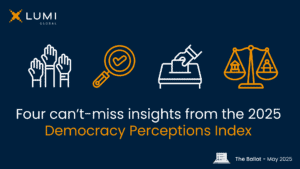There is currently much buzz about the chatbot ChatGPT.
This chatbot is trained to mimic human speech when responding to inquiries and has received a large amount of attention due to its ability to provide detailed overviews of topics, answer questions, write essays, and even fix bugs in code.
At Assembly Voting, we wonder about how such a tool might help voters learn more about online voting. By online voting, we refer to a specific type of electronic voting which uses the internet. It is widely used in a number of settings today, including in trade unions, political parties, private companies, municipalities, and even national elections.
We asked ChatGPT to tell us about the benefits of online voting and concerns surrounding it; here is what it had to say.
What are we covering?
Top 3 Benefits of Online Voting according to ChatGPT
1. Convenience

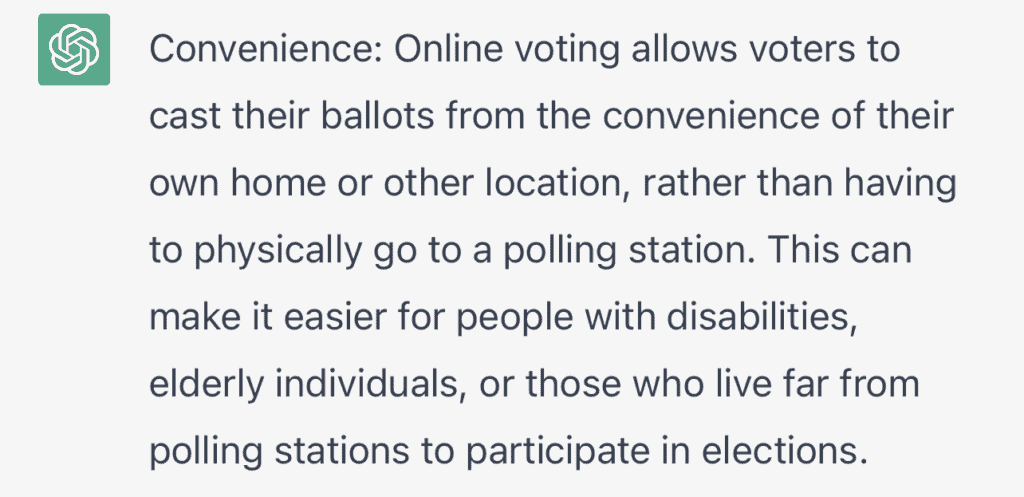
At Assembly Voting, we believe that convenience is closely linked to accessibility, meaning that any voters who cannot go to a physical polling station, no matter their circumstances, are still able to securely vote. With online voting, it may be possible to build a system which can accommodate all kinds of voters and be flexible enough to allow changes as needed. For more on how online or mobile voting platforms can boost accessibility for those with disabilities, check out our blog post on it here.
2. Increased Voter Turnout

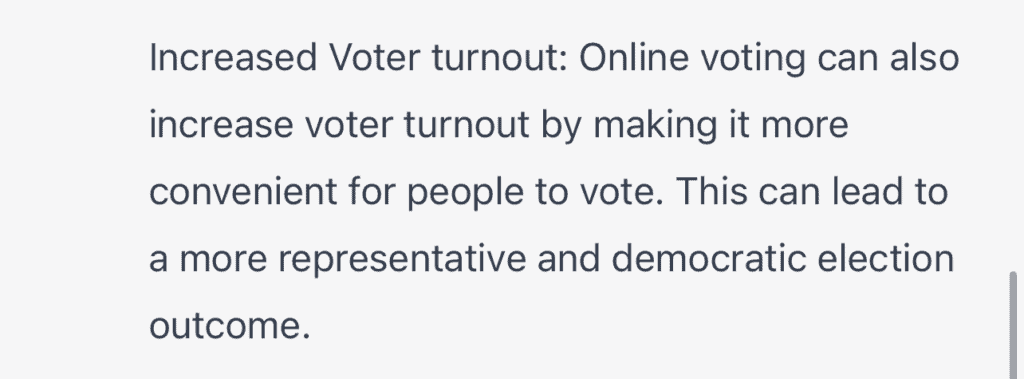
Online voting can also potentially boost turnout by making it easier for eligible voters to vote. In our experience, this is especially true for organizations, with turnout in Danish unions rising by 28 percentage points to 57.6% in only eight years following the adoption of online voting for voting on collective agreements. Also, in the OSCE Parliamentary Assembly, online voting services provided by Assembly Voting helped their voter turnout reach a record high of 86% at their 2021 annual gathering. Of course, there are other factors affecting voter participation. If you would like to learn more about them, be sure to read our blog post about it.
3. Cost Savings


According to one study comparing the costs of voting methods in local elections, online voting was the most cost efficient option amongst all options when it was widely used. Of course, as many organizations do not use polling stations or require staffing, adopting online voting may not immediately offset voting expenses. Rather, many of our clients, such as the Church of Denmark, have seen their initial investment in online voting pay off by lowering the cost of their elections over a longer period of time.
Top 3 Concerns Surrounding Online Voting
1. Security

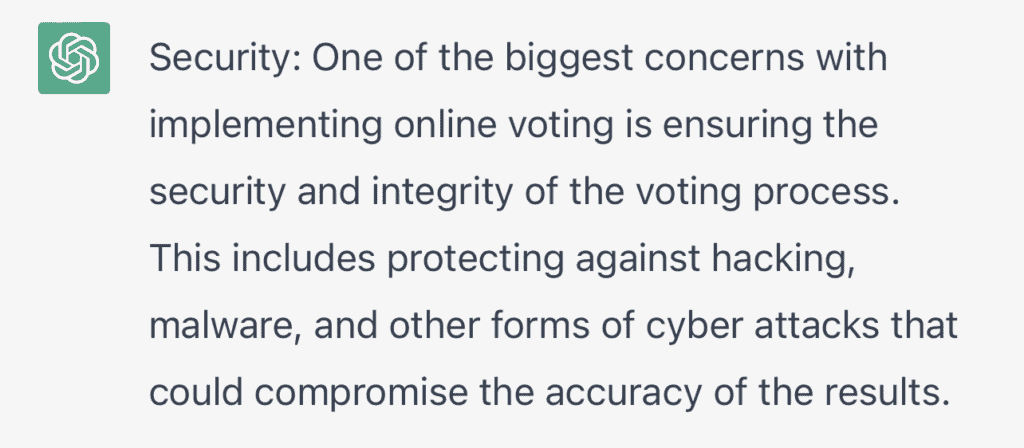
Security is a very important aspect of a reliable online voting system. On our end, we do our utmost to protect the integrity of our voting solutions through digital signatures, mathematically-proven algorithms, and end-to-end verifiability, a feature which allows observers to witness and verify that the voting system is functioning properly throughout the entire voting process. Thus, no tampering will go unnoticed.

Ștefan Patachi
Chief Cryptographer at Assembly Voting
I think the most challenging security threat is that voters vote from a non-secured environment, such as their home or a public cafe, in contrast to a polling station. However, we are working hard to build mechanisms to deal with these risks, such as end-to-end verifiability. Additionally, while having servers online that hold election data is also a threat, there are standard procedures to protect that, such as ensuring strong voter authentication, keeping data encrypted at all times, having applications and systems up to date with the latest security updates, and many others.
I think the most challenging security threat is that voters vote from a non-secured environment, such as their home or a public cafe, in contrast to a polling station. However, we are working hard to build mechanisms to deal with these risks, such as end-to-end verifiability. Additionally, while having servers online that hold election data is also a threat, there are standard procedures to protect that, such as ensuring strong voter authentication, keeping data encrypted at all times, having applications and systems up to date with the latest security updates, and many others.
Ștefan Patachi
Chief Cryptographer at Assembly Voting
2. Voter Verification

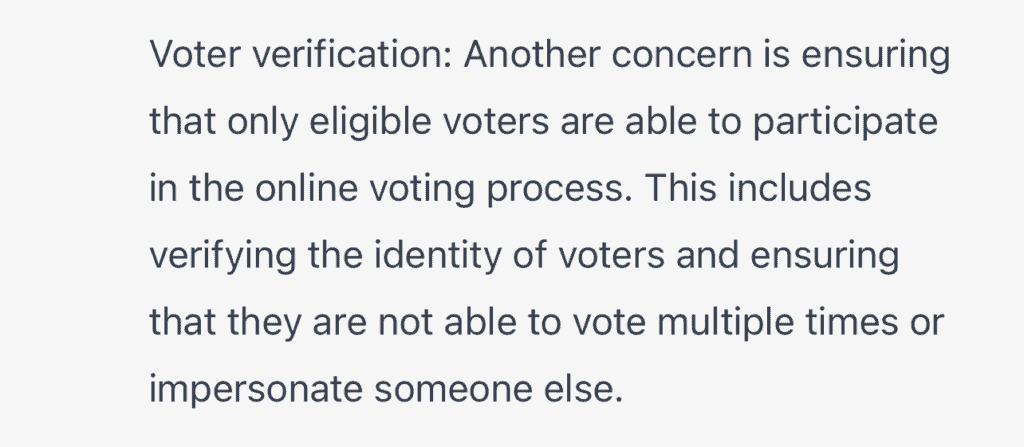
Here, we come to a key question: “how do we really know people are who they say they are online?” Though we cover the issue in deeper detail in our blog post on online authentication, we would like to highlight a few technological features which help counter this concern.
The first is multi-factor authentication (MFA), a feature which requires users to enter both a password and confirm their login through another method, such as via an app. The second feature is integrated digital IDs issued by governments which allow citizens to access many services digitally, many of which also require MFA. In preventing multiple votes, it is possible to use a system in which only the last vote a voter casts is counted, whether physical or digital.
3. Accessibility

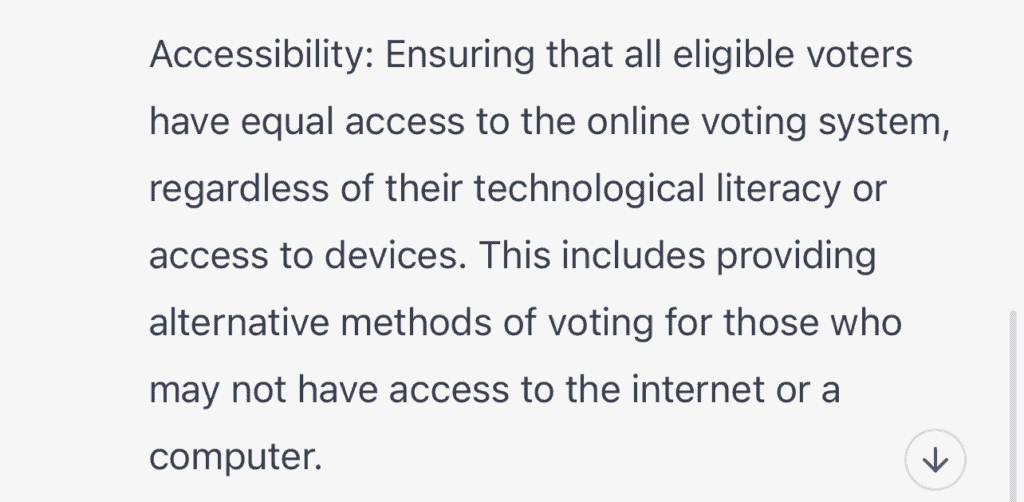
An important consideration here is the usability of the system, in particular how easy it is for anyone to properly use it.

Sara Janácková
UX Designer at Assembly Voting
ChatGPT is correct in mentioning the equal access to online voting system as a challenge, but it is one that can be overcome. Therefore, we are designing solutions that are simple, easy to use, and tested with different user groups, including seniors or people with disabilities. The solutions also have to be device responsive, as some of the voters might vote on the move or on small screens.
ChatGPT is correct in mentioning the equal access to online voting system as a challenge, but it is one that can be overcome. Therefore, we are designing solutions that are simple, easy to use, and tested with different user groups, including seniors or people with disabilities. The solutions also have to be device responsive, as some of the voters might vote on the move or on small screens.
Sara Janácková
UX Designer at Assembly Voting
Regarding device or internet access, something important to remember is that elections do not have to exclusively be online. As Sara also mentions, “In the case where the voter has no access to a device, we provide a hybrid solution to our customers meaning that some voters can choose to vote by mail.”
It is normal to have concerns about technologies such as online voting. As even ChatGPT knows, online voting has both pros and cons which are worth reviewing, as we have done here. Ultimately, the only way these benefits are achieved and these concerns are addressed is by continuously learning and improving the technology so that it may reach its full potential.

